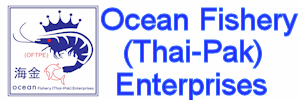Commercial Fishing in Tahiti
Tahiti's commercial fish exports literally took off during 1997
with a volume that was nearly 1,000% greater than that of 1996. The
volume of 1997 fish exports was 1,118 tons that were worth 401
million French Pacific francs (about US$4m).
And the potential growth has been enhanced since December 1997 with
the quality of Tahiti's exported fish conforming to the most strict
international standards. The commercial fishing industry, Tahiti's
third major resource, behind tourism and pearl farming, was
modernized in 1997 with new refrigerated tuna boats and longer stays
at sea. The record 1997 results simply reinforced the government's
forecast of commercial fish catches totaling 11,000 tons by the year
2003, with 7,400 of those tons being exported, earning an expected
value of 3 billion F CFP yearly. That explains why Tahiti today is
looking for investors who can help to enlarge its growing fleet of
fishing boats. The goal is a fleet of 50 new boats by 2002, doubling
the volume of direct and indirect employment to some 4,000 jobs.
South Korea is the only foreign country
with whom Tahiti has a signed agreement permitting fishing inside
its Exclusive Economic Zone. In the past, Japan, also had fishing
arrangements within the Exclusive Economic Zone. Those arrangements
involved selling licenses for nominal fees to foreign boats that
hauled away the catches, processed them and realized the value
added.
Papeete has been an international
fishing port since the first whaleboat ships called here during the
18th century. And the more recent growth of Tahiti's industrial
fishing fleet has led to the Development and expansion of the
Papeete Fishing Port, located in the East Basin of the Port
Authority next to Fare Ute.
Since June 1995 the Papeete Fishing Port Co. has been operated by
the Chamber of Commerce, Industry, Services in French Polynesia.
The equivalent of several millions of
dollars has already been spent developing this fishing port. That
work has included building big wharves for ocean-going fishing boats
to off-load their catches and building floating metal pontoons to
handle several fishing boats at a time.
The fishing port produces its own ice,
has cold storage rooms and an air-conditioned trading room for fish
catches to be sold immediately upon being unloaded.
There are a hundred
or so longlining vessels based in Tahitiís Port de Peche (fishing
port), that fish between the Society and Marquesas island groups.
The longliners target
albacore,
bigeye,
and
yellowfin tuna, although they may also fish for
swordfish,
sailfish, skipjack, and
mahi mahi.
Of the hundred or so longlining boats though, only fifty or sixty of
them are operating, as there is waning interest in fishing due to
regulations and the knowledge of them required to captain a fishing
boat. Despite a diminishing fishing force, French Polynesia
has one of the highest consumptions of fish per capita in the world.
Between pelagic, coastal and lagoon fisheries, eight thousand to ten
thousand tons of fish are caught commercially in French Polynesia
each year. With a population of 260,000, per person consumption is
between 61.5 and 77 pounds of fish per year, or about a sixth of a
pound of fish per day, not including fishing for subsistence. The
majority of tuna caught in French Polynesian waters reaches
residents through markets, restaurants, and even schools.
Ocean
Health Index French Polynesia - The Ocean Health Index is a valuable tool for the
ongoing assessment of ocean health. By providing a means to advance
comprehensive ocean policy and compare future progress, the Index
can inform decisions about how to use or protect marine ecosystems.
The Index is a collaborative effort, made possible through
contributions from more than 65 scientists/ocean experts and
partnerships between organizations including the National Center for
Ecological Analysis and Synthesis, Sea Around Us, Conservation
International, National Geographic, and the New England Aquarium.
Information for French Polynesia





